The need to protect the fragile Everglades was recognized in 1934 with the establishment of the Everglades National Park. The wetland area has shrunk as urbanization has led to the loss of natural habitats. Florida’s sometimes turbulent weather, bringing strong hurricanes and tornadoes, has created pockets of damage to the Everglades. Most damaging, however, isn’t the weather or people but the progression of an invasive species: snakes. The first python was documented in the Everglades in 1972. Despite efforts to limit the spread of the species, these snakes have become established. How many pythons are in the Everglades? The answer is more than anyone ever expected.
The Florida Everglades
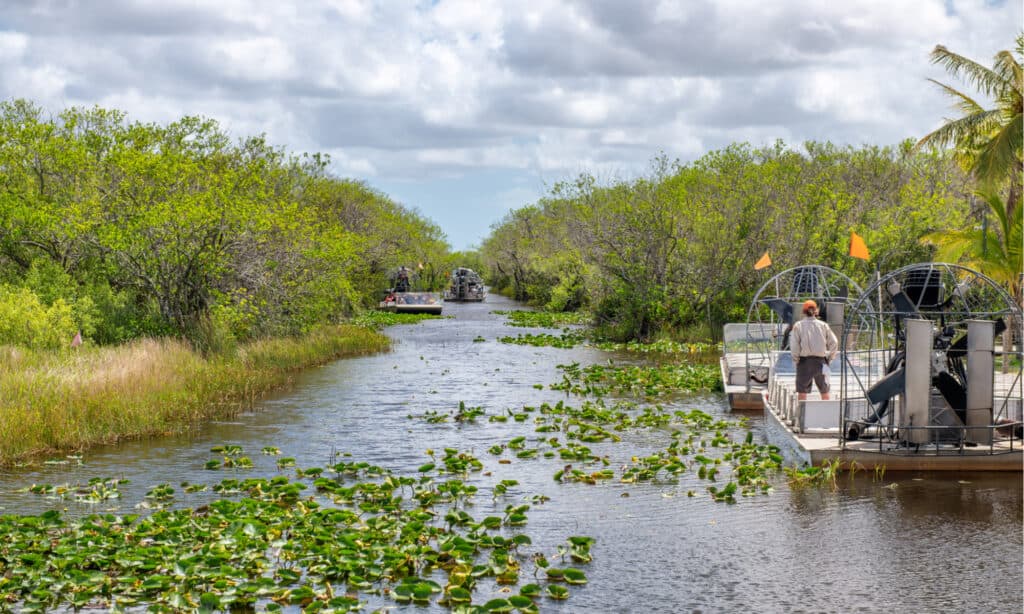
Everglades National Park in Florida protects 1.5 million acres of the state’s Everglade landscape, making it one of the largest National Park in the United States.
©GagliardiPhotography/Shutterstock.com
The name Everglades refers to over two million acres of sub-tropical wetlands spanning the state of Florida, beginning in Central Florida and ending in Southern Florida. When Lake Okeechobee overflows yearly, the water creates a large, slow-moving stream that travels south, eventually emptying into Florida Bay. Called ‘Rivers of Grass’, these sawgrass marshes provide homes to many native species. During the dry seasons of the year, the land reverts to swampy marshes, local ponds, and smaller water pockets.
How Were Burmese Pythons Introduced into the Everglades?
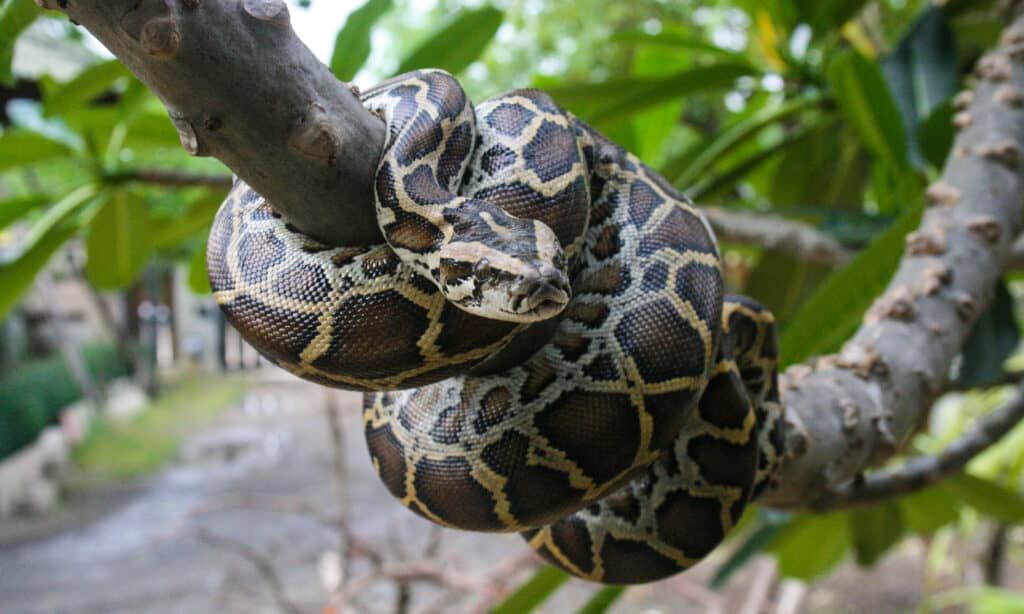
Burmese
pythons are now illegal to own as pets in Florida. These snakes can grow up to 20 feet long and weigh as much as 200 pounds.
©iStock.com/Lunatic_67
Pythons were likely introduced to the Everglades as released pets. Then, in 1992, Hurricane Andrew destroyed an exotic pet breeding facility. This released many of the snakes into the wild, where they thrived in Florida’s warm, humid climate. The Everglades are an ideal environment for snakes. Small birds, mammals, other reptiles, high humidity, and dense foliage provide everything snakes need to thrive. Most concerningly, these snakes have no natural predators in the Everglades. Bobcats, alligators, and other native species have begun to eat them as their population increases.
How Many Burmese Pythons Live in the Everglades Today?

Florida’s Fish and Wildlife Conservation Commission estimates that between 100,000 to 300,000 pythons currently live in the Everglades. Efforts to limit these snakes have led to nearly 20,000 removals. However, these snakes have a rapid reproduction cycle. Each breeding cycle can result in a clutch, or nest, of up to 100 eggs. Burmese pythons lay a clutch of eggs every other year, with studies showing up to 80 percent of each clutch survives. In addition, Burmese pythons can live for up to 20 years. This means the average female Burmese python can breed up to 1,000 baby pythons over her lifespan! Burmese pythons benefit from natural camouflage. With their ability to swim well and stay submerged underwater for up to a half-hour, capturing these snakes is difficult.
Are Pythons Breeding with Native Snakes?
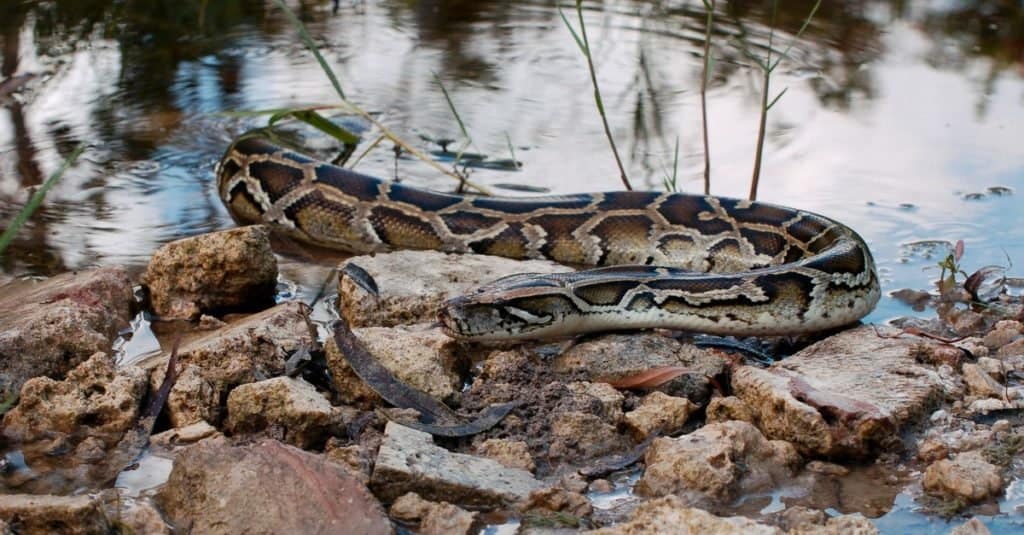
Burmese Python in the Everglades.
©Heiko Kiera/Shutterstock.com
While Burmese pythons aren’t breeding with snakes native to Florida, studies have found that a portion of Burmese pythons in the Everglades carry DNA markers for Indian pythons. Scientists aren’t certain whether these snakes bred with an Indian python before or after living in the Everglades. Indian pythons are smaller than Burmese pythons, however, they exhibit much of the same behavior and breeding traits. Where Burmese pythons prefer water, Indian pythons prefer sandy areas. Ecologists worry this genetic variance may be enough to encourage the invasive snake population in the Everglades. The hybrids may show what’s referred to as ‘hybrid vigor’, a term used to describe offspring that carry the best traits of both parents.
How is this Damaging the Ecosystem?
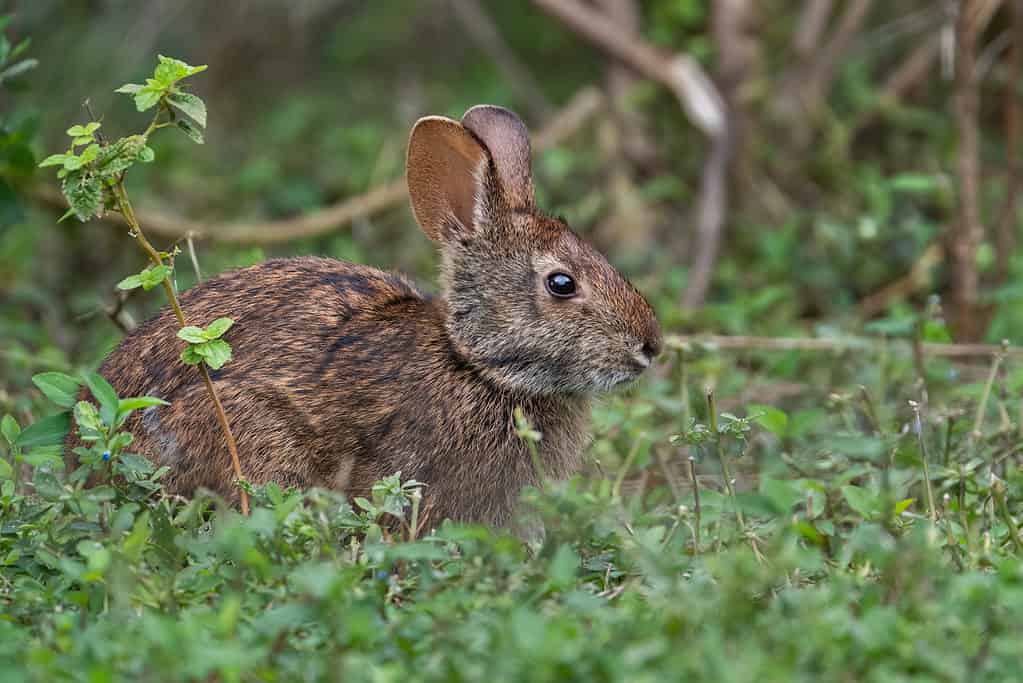
Marsh rabbits, once common sightings in the Everglades, have decreased in population dramatically.
©iStock.com/MattCuda
A population study by USGS concluded that bobcats, raccoons, and opossums in the Everglades experienced a decline in population of between 87 percent to 96 percent. Other mammals, such as rabbits and foxes, virtually disappeared. This loss of native species disrupts the food chain. Vegetation once eaten by the rabbits, for example, will overgrow, creating an increase in the population of insects. Severe disruption in a natural food chain can, over time, cause the collapse of the local ecological structure and the loss of many other species. For this reason, conservation efforts to combat pythons in the Everglades are underway. While not venomous, Burmese pythons have two rows of long, sharp teeth. These teeth bend backward, acting as hooks to pull prey into their mouths. They also have a unique cartilage structure around their mouths, which enables their ability to both eat while breathing as well as consume larger animals.
Python Risk to Endangered Animals
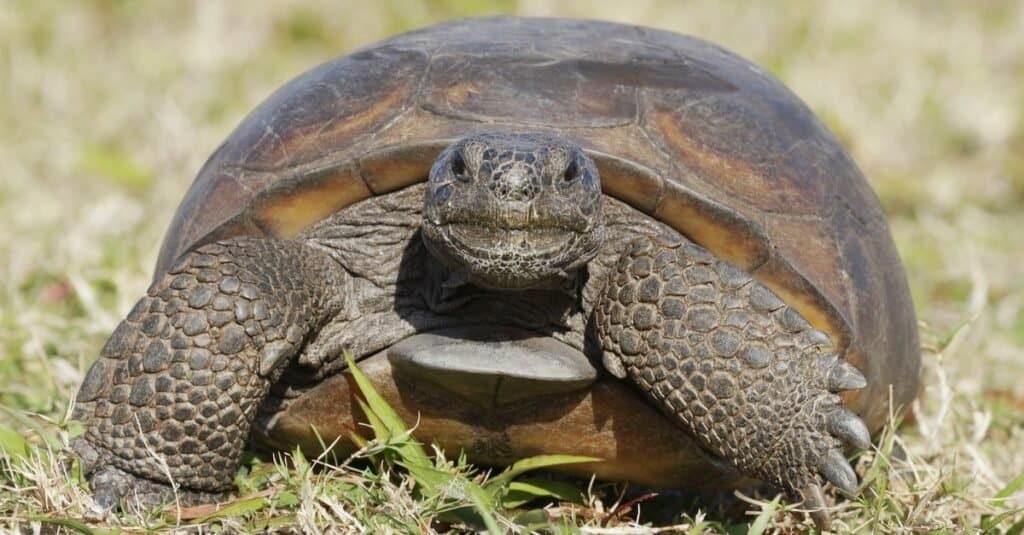
A curious endangered Gopher
Tortoise
(Gopherus polyphemus) walks on the grass in Florida.
©Brian Lasenby/Shutterstock.com
The Florida Everglades are home to 18 endangered or threatened species, ranging from a variety of waterfowl to the manatee. Of these species, the Gopher Tortoise is of particular concern. These tortoises are a threatened species in Florida. Burmese pythons not only eat the tortoise, they occupy their dens. The discovery of several pythons in the same den proved that pythons were using the dens to breed.
Conservation Efforts in the Everglades

Several initiatives are underway to remove pythons from the Everglades.
©dwi putra stock/Shutterstock.com
Annual Florida Python Challenges are held to assist in python control. After registering and training, participants from Florida and other states compete to remove the most pythons over 10 days. Participants who capture the most, or the largest, pythons win prizes. While pythons are large, they’re non-venomous, which reduces the risk of participating.
Other conservation efforts include the Python Elimination Program, organized by the South Florida Water Management System. Agents that meet the qualifications can register and receive a nominal payment for each python removed from the Everglades. Male pythons have been captured, fitted with trackers, and released. By tracking their movements, conservation teams can locate and remove breeding females and their eggs before they hatch. Several female pythons have also been fitted with trackers. This allows scientists to track their movements. By learning python habits, scientists hope to make capture and removal easier.
Are Other Invasive Snakes Threatening the Everglades?
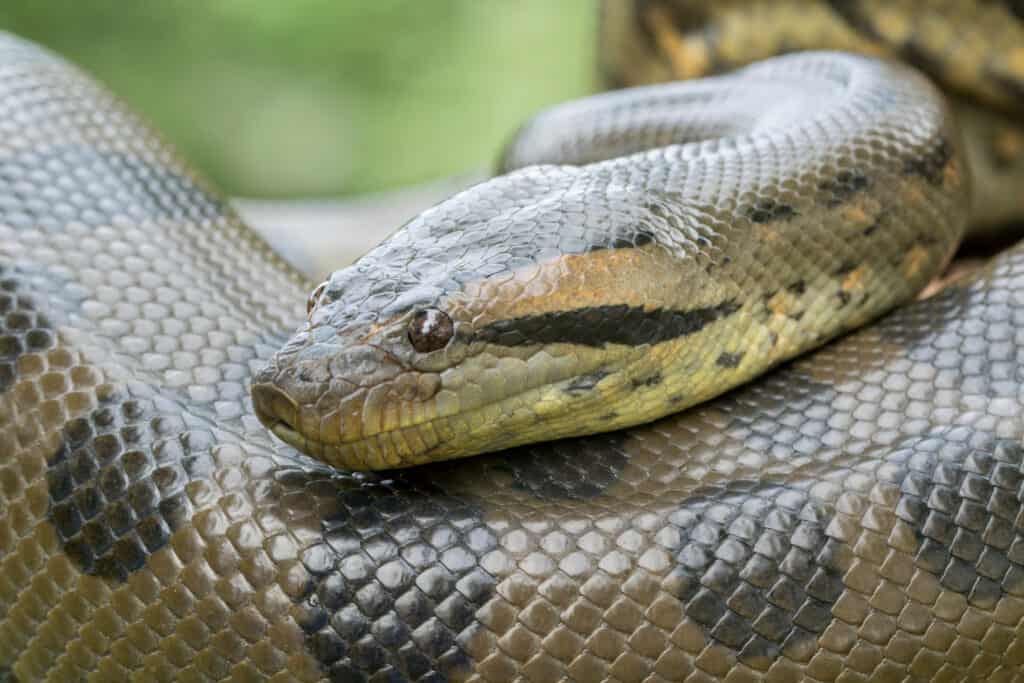
There have been about 11 sightings in Florida of the green anaconda, the largest species of snake in the world, with some individuals reaching lengths of up to 30 feet and weighing up to 550 pounds.
©Mark_Kostich/Shutterstock.com
Green anaconda were first spotted in the Florida Everglades 20 years ago. While these snakes haven’t reached the same number as Burmese pythons, their presence is concerning to ecologists. Their large size makes them a greater threat to wildlife than Burmese pythons. Alligators, deer, and even humans may be potentially at risk if this invasive snake finds a habitat in the Everglades. Differences between the species, however, limit anaconda population growth. Anaconda only mate every other year, and their nests typically produce 40 or fewer eggs. Female anaconda sometimes eat their mates after breeding, which helps to limit the number of babies born. Despite this, anacondas are a species of concern, with removal efforts enforced.
Exotic Pet Amnesty Program
To stop the release of pets, Florida has established an Exotic Pet Amnesty Program. This program, organized by the Florida Fish and Wildlife Conservation Committee, is open year-round. Residents who own but can no longer care for exotic, conditional, or prohibited animals can surrender their pets without penalty. Qualified caregivers then adopt the animals.
The photo featured at the top of this post is © Heiko Kiera/Shutterstock.com
Discover the "Monster" Snake 5X Bigger than an Anaconda
Every day A-Z Animals sends out some of the most incredible facts in the world from our free newsletter. Want to discover the 10 most beautiful snakes in the world, a "snake island" where you're never more than 3 feet from danger, or a "monster" snake 5X larger than an anaconda? Then sign up right now and you'll start receiving our daily newsletter absolutely free.
Thank you for reading! Have some feedback for us? Contact the AZ Animals editorial team.







